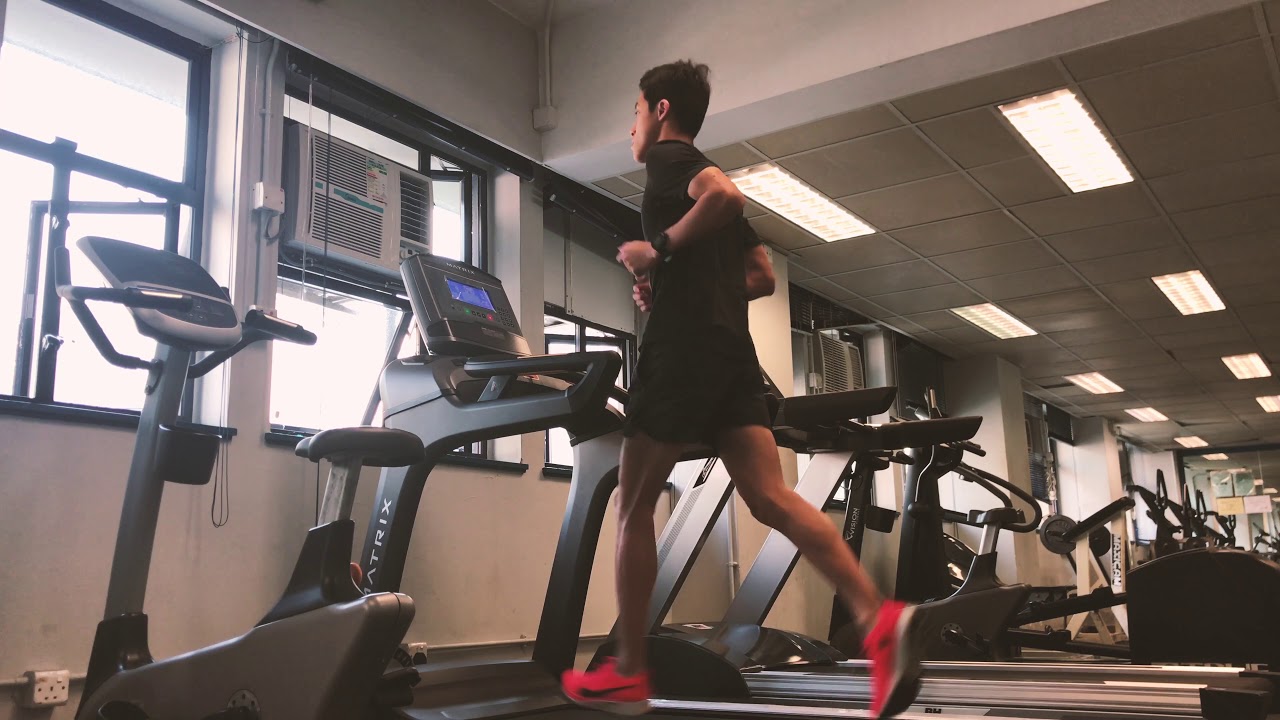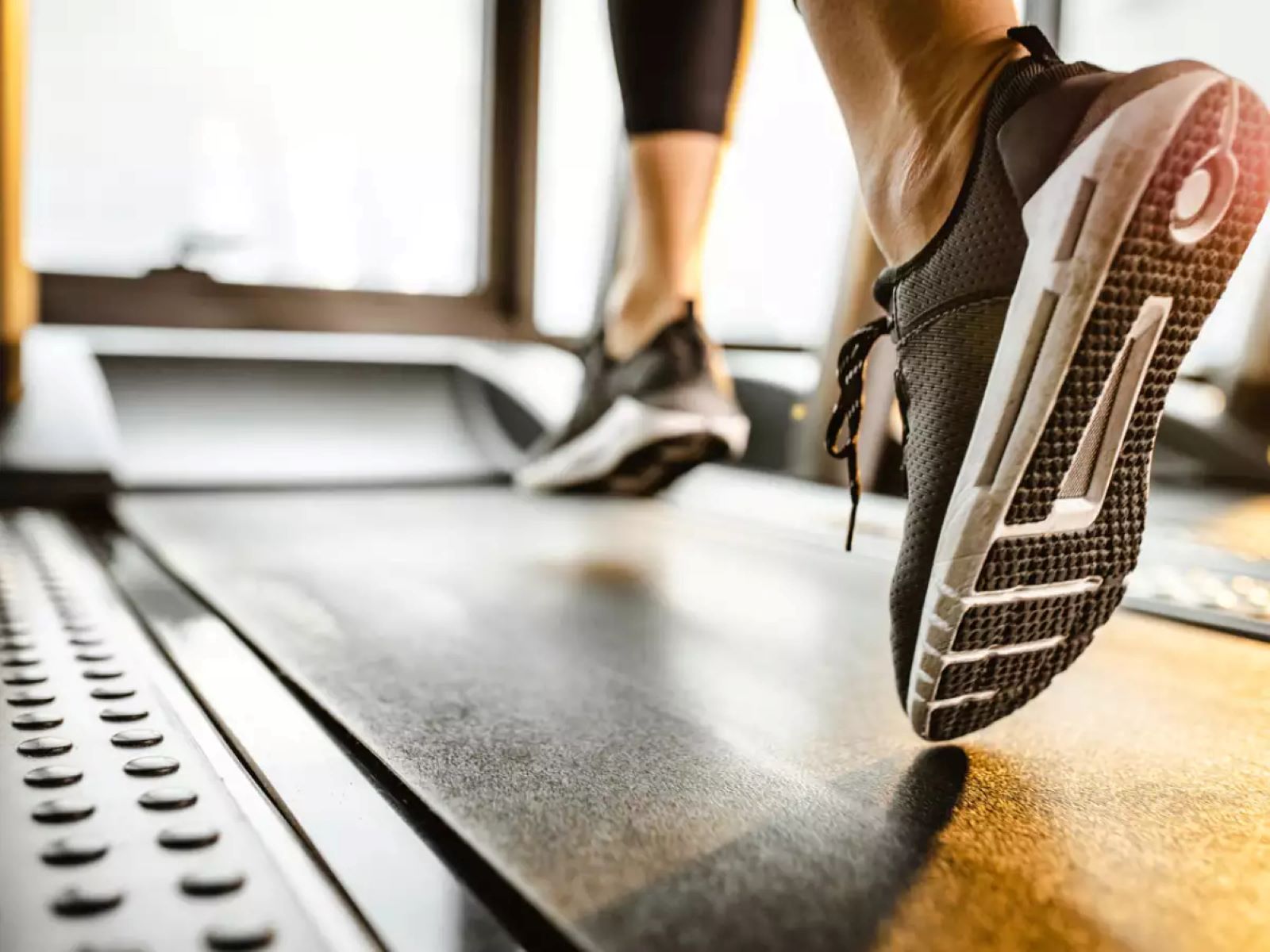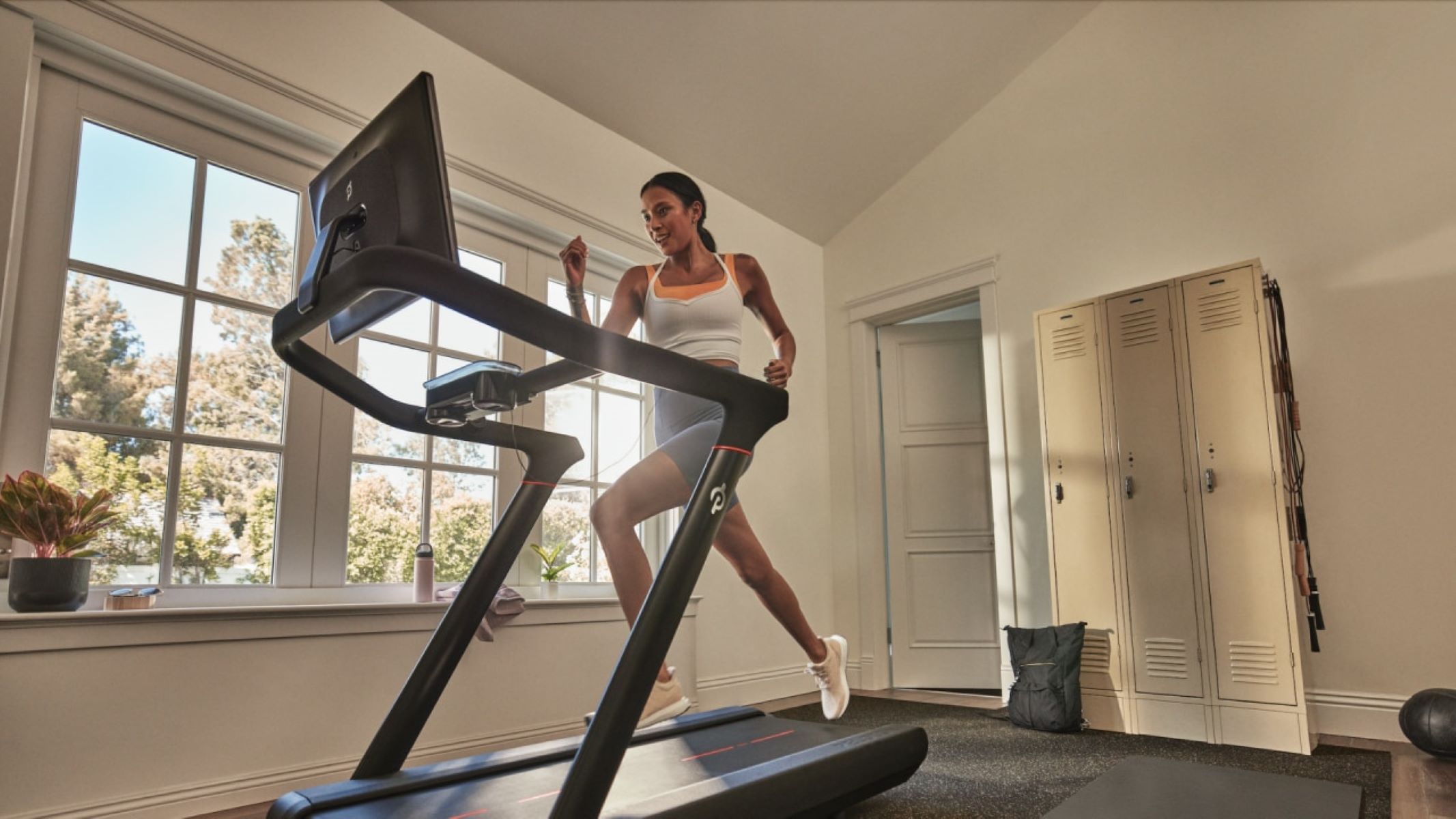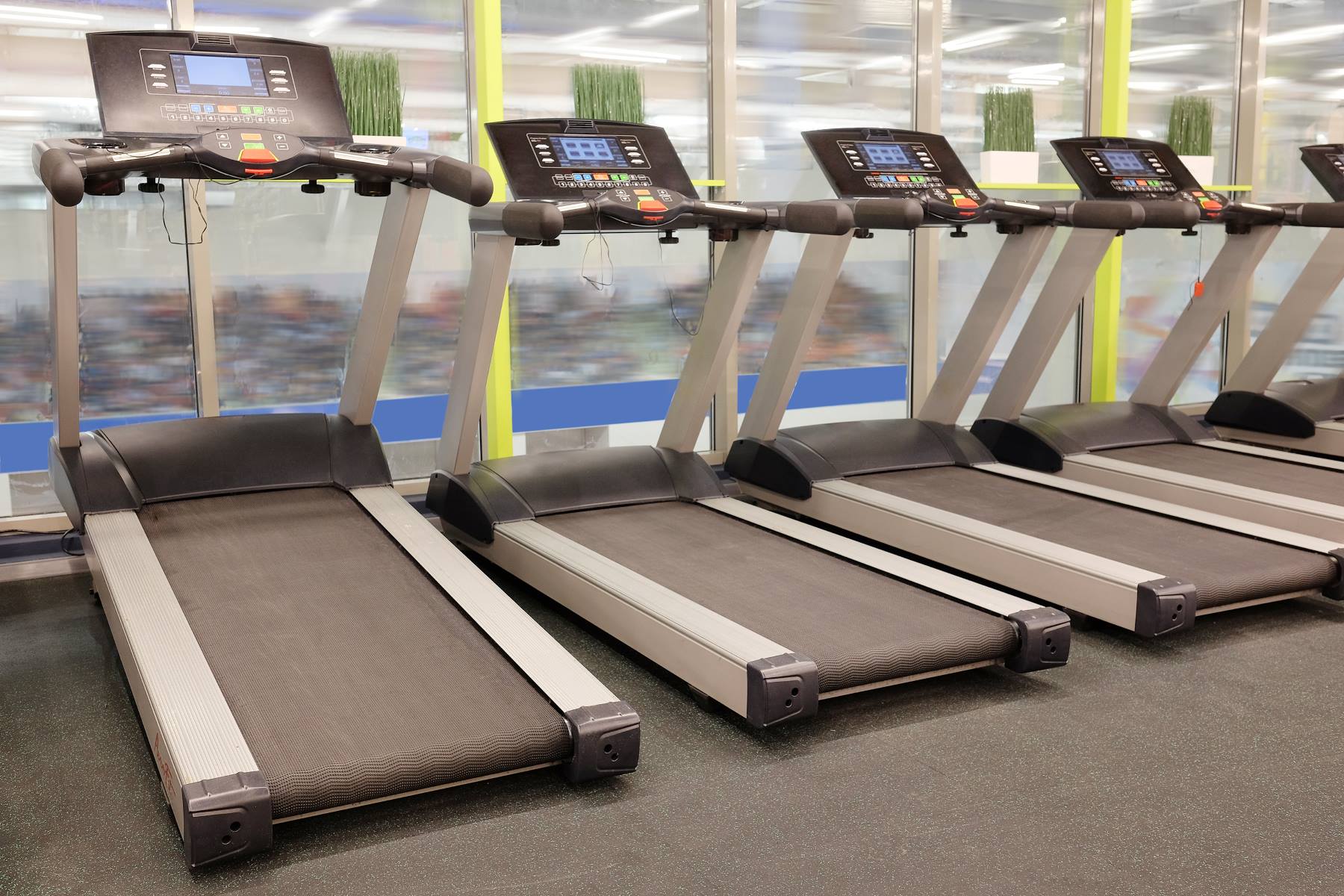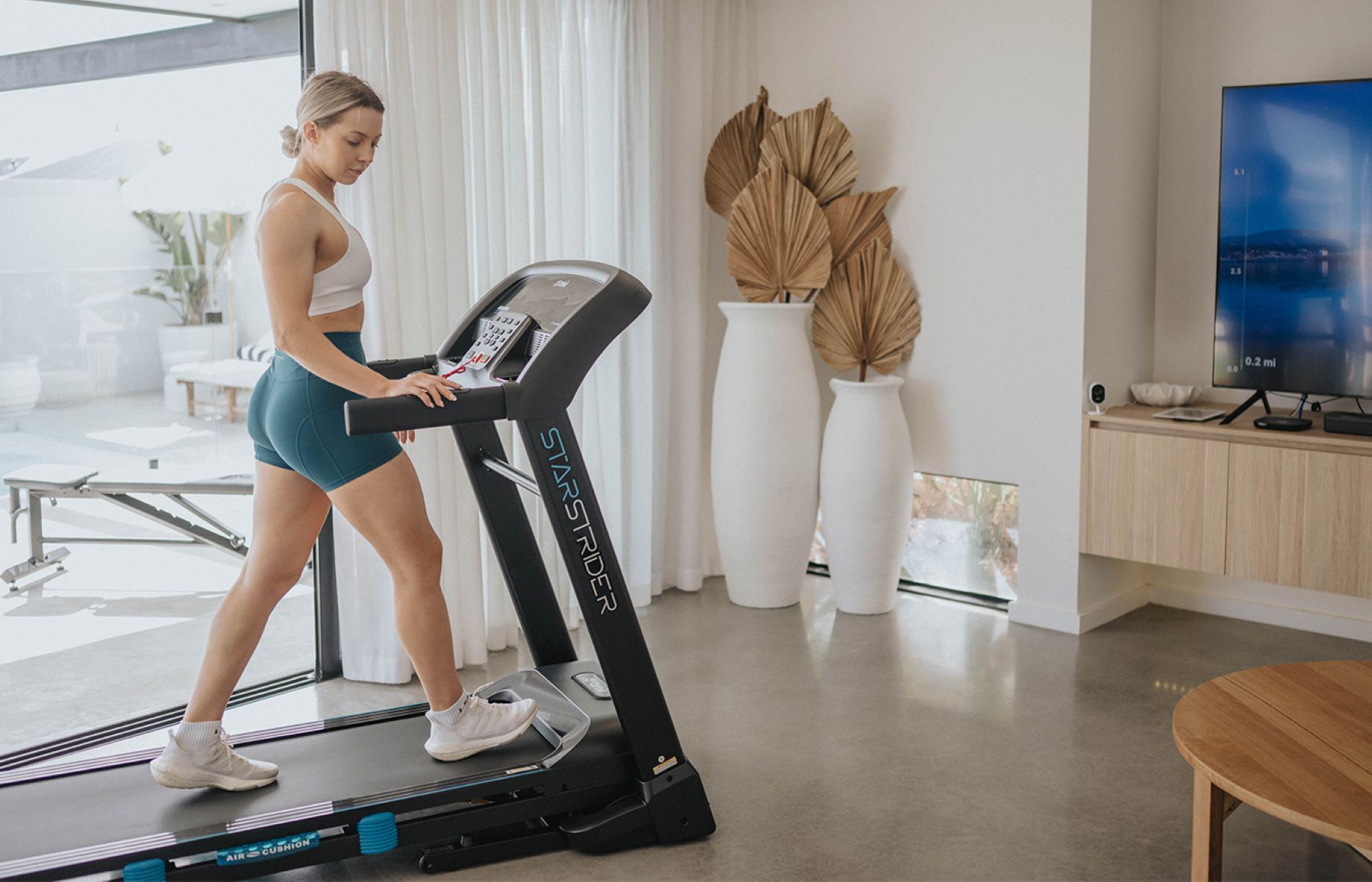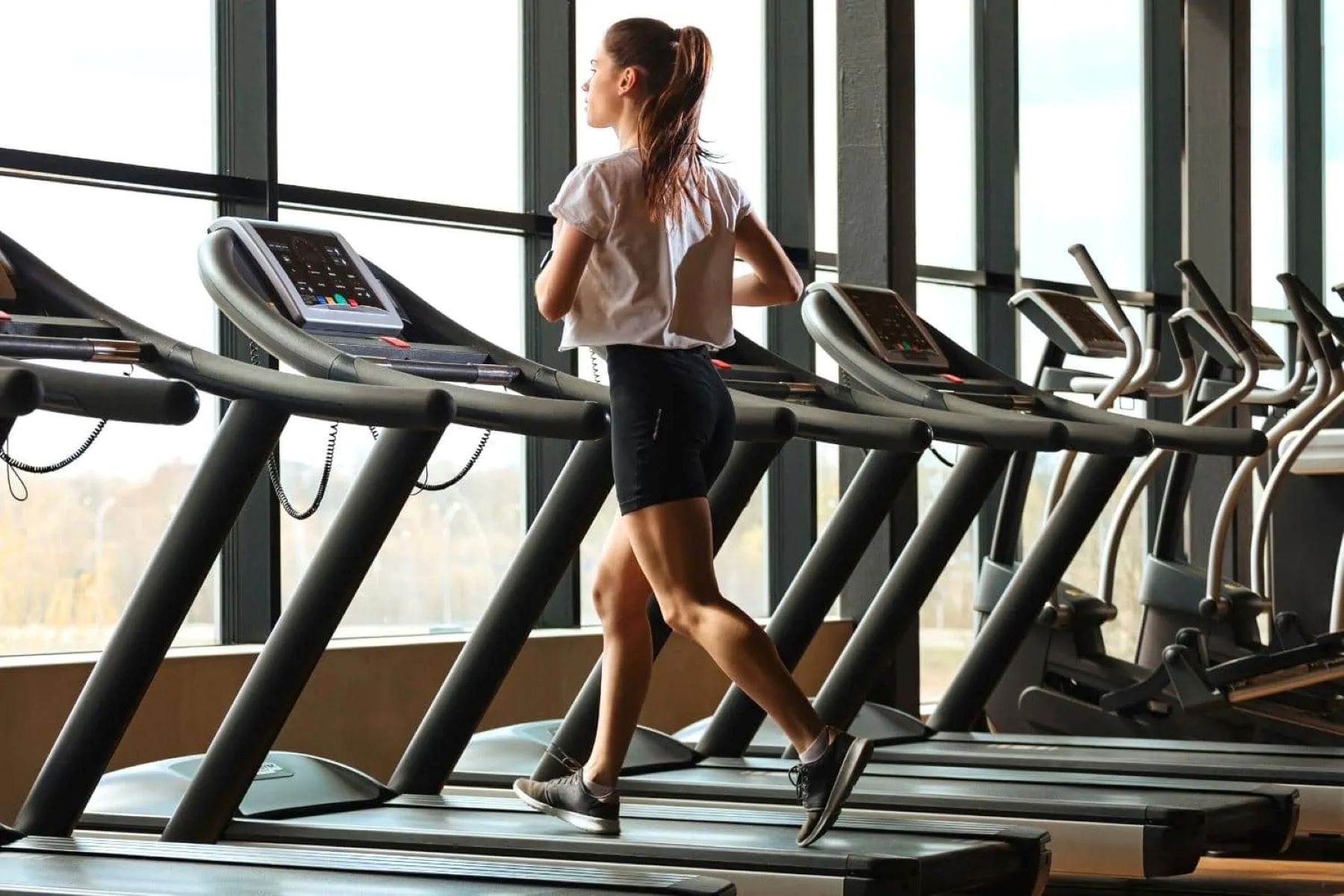

Featured
Why Do I Run Slower On Treadmill
Modified: January 2, 2024
Discover the reason behind running slower on a treadmill and find out how to improve your performance. Featured article providing valuable insights and tips.
Introduction
Running is a popular form of exercise that offers numerous health benefits, including cardiovascular fitness, increased stamina, and stress reduction. While many runners prefer to hit the pavement or trails for their workouts, running on a treadmill is a convenient alternative. However, some individuals may notice that their running speed is slower on the treadmill compared to outdoor running. This discrepancy has challenged many runners and sparked curiosity about the factors that contribute to this difference.
Understanding why running on a treadmill can feel slower than running outside requires an exploration of various factors including body mechanics, environmental conditions, and even psychological influences. By delving into these factors, we can gain insights into why individuals may experience a decrease in running speed on the treadmill and discover strategies to improve performance.
It is important to note that the purpose of this article is not to discourage the use of treadmills for running. Treadmills provide a safe and controlled environment for running, allowing individuals to maintain consistent pacing and accurately track their progress. Whether you prefer running outdoors or on the treadmill, the key is finding a routine that suits your preferences and helps you achieve your running goals.
Factors Affecting Running Speed on a Treadmill
When it comes to running on a treadmill, several factors can potentially impact your running speed. Understanding these factors can help you identify areas for improvement and make necessary adjustments to your training routine. Here are some key factors that may affect your running speed on a treadmill:
- Incline Settings: Treadmills offer the option to adjust the incline, simulating uphill or downhill running. Running at a higher incline requires more effort and can slow down your pace compared to running on a flat surface.
- Belt Speed: The speed at which the treadmill belt moves directly affects your running pace. If the belt speed is set too slow, it can hinder your stride and make you feel like you’re running slower than you actually are.
- Running Form: Your running form plays an essential role in maintaining an efficient and consistent pace. On a treadmill, it’s crucial to maintain proper form, including a relaxed posture, quick turnover, and even distribution of weight, to optimize your running speed.
- Footwear: The type of running shoes you wear can impact your comfort and running efficiency. Ill-fitting or worn-out shoes may lead to discomfort or inefficient running mechanics, ultimately affecting your speed.
Furthermore, individual factors such as fitness level, muscle strength, and aerobic capacity can also influence your running speed on a treadmill. If you’ve recently transitioned from outdoor running to treadmill running, it’s common to experience an adjustment period as your body adapts to the new environment and running mechanics.
Remember, the key to improving your running speed on a treadmill is to address these factors individually and make necessary adjustments to optimize your performance. Whether it’s adjusting the incline, increasing the belt speed, focusing on maintaining proper form, or investing in quality running shoes, addressing these factors can help you overcome any initial challenges and improve your running speed on the treadmill.
Differences Between Treadmill Running and Outdoor Running
Running on a treadmill offers a different experience compared to running outdoors. It’s important to understand the key differences between the two to comprehend why your running speed on a treadmill may vary from your outdoor runs. Here are some notable differences:
- Surface: Treadmills provide a flat and cushioned surface, which can be more forgiving on your joints compared to running on concrete or uneven outdoor terrains. This cushioning effect may result in a slightly different running stride and perceived effort.
- Environmental Conditions: When you’re running outdoors, you’re exposed to various environmental factors such as wind resistance, changes in temperature, and variations in terrain. Treadmill running eliminates these external influences, creating a more controlled environment for running.
- Mental Stimulation: Running outdoors often offers a variety of scenery and distractions, such as changing landscapes, fellow runners, or wildlife, which can provide a sense of mental stimulation and motivation. On the other hand, treadmill running may lack the same level of external stimuli, which can affect your motivation and perceived effort.
- Pacing and Cadence: The consistency and precision of pace control are notable advantages of treadmill running. On a treadmill, you can set a specific speed and maintain it throughout your run, ensuring a consistent pace. Outdoor running, however, requires constant adjustment to maintain a desired pace, which can impact your running speed.
It’s important to acknowledge these differences and be aware that your running speed on a treadmill may not directly correlate with your outdoor running speed. Many runners find that they can maintain a faster pace outdoors due to the additional challenges and stimuli present in an outdoor environment.
However, it’s worth noting that treadmill running can provide its own unique benefits. It allows for controlled tracking of distance, pace, and incline, making it an effective tool for specific training goals and workouts.
By recognizing the distinctions between treadmill running and outdoor running, you can better understand the factors influencing your running speed and adjust your training accordingly. Embracing the variations and finding a balance between treadmill running and outdoor running can help you become a more well-rounded and versatile runner.
Impact of Body Mechanics on Treadmill Running Speed
Your body mechanics, including your running form and technique, play a significant role in determining your running speed on a treadmill. Proper body mechanics can help you optimize your performance and increase your speed. Here are a few key aspects of body mechanics that can influence your treadmill running speed:
- Stride Length: The length of your stride can affect how fast you cover the distance on a treadmill. It’s important to find a stride length that allows for efficient and comfortable running without overstriding or taking too many short, choppy steps.
- Cadence: Cadence refers to the number of steps you take per minute. A higher cadence can contribute to faster running speed as it allows for quicker turnover and reduces ground contact time. Strive for a cadence of around 180 steps per minute.
- Upper Body Alignment: Maintaining proper upper body alignment during treadmill running is crucial. Keep your torso upright, engage your core muscles, and avoid excessive swinging or slouching. Good upper body alignment helps optimize your running efficiency.
- Arm Swing: Proper arm swing coordination can enhance your running speed. Your arms should swing naturally and actively, driving forward and backward with each stride. Avoid crossing your arms in front of your body or letting them hang limply by your side.
- Foot Placement: Pay attention to how your feet land on the treadmill. Aim for a midfoot or forefoot strike, where your foot lands directly below your body. This promotes a more efficient transfer of energy and reduces the risk of excess impact on your joints.
It’s essential to be mindful of your body mechanics while running on a treadmill. Take time to assess your form and make any necessary adjustments. This may involve seeking guidance from a running coach or utilizing video analysis to observe and fine-tune your running technique.
Furthermore, incorporating strength and flexibility exercises specific to running can also improve your body mechanics and overall running speed on a treadmill. Focus on exercises that target your leg muscles, core stability, and overall body strength to enhance your running efficiency and speed.
Remember, developing good body mechanics takes time and practice. Be patient with yourself and make gradual changes to your running form. By consistently paying attention to your body mechanics and making necessary improvements, you can optimize your running speed on a treadmill.
Potential Psychological Factors Influencing Treadmill Running Speed
Running speed on a treadmill can be influenced not only by physical factors but also by psychological factors that impact your mindset and motivation. Understanding these psychological factors can help you address any barriers and improve your performance on the treadmill. Here are some potential psychological factors that can influence your treadmill running speed:
- Perception of Effort: The perception of effort can significantly impact your running speed. When running on a treadmill, it is common for individuals to perceive their effort as higher compared to outdoor running, even at the same pace. This perception may lead to a slower pace or a sense of fatigue.
- Monotony and Boredom: Treadmill running can sometimes be perceived as monotonous due to the lack of changing scenery and the repetition of running on a stationary surface. This boredom can affect your motivation, leading to a decrease in running speed.
- Lack of External Stimuli: Running outdoors often provides visual stimuli and distractions, such as nature, fellow runners, or landmarks. These external stimuli can help divert your attention and keep you mentally engaged. Treadmill running, on the other hand, may lack the same level of external stimuli, which can affect your focus and running speed.
- Mental Fatigue: Psychological factors, such as stress, anxiety, or preoccupation with other thoughts, can contribute to mental fatigue during treadmill running. Mental fatigue can impact your motivation and make running feel more challenging, potentially leading to a slower pace.
- Motivation and Goal Setting: Your motivation levels and the goals you set for yourself can influence your running speed on a treadmill. Having clear goals and a sense of purpose can boost your motivation and drive you to maintain a faster pace.
Awareness of these psychological factors can help you overcome any obstacles and improve your treadmill running speed. Here are a few strategies to address these factors:
- Vary Your Workout: Incorporate different types of workouts, such as interval training, tempo runs, or hill simulations, to add variety and challenge to your treadmill runs. This can help combat boredom and maintain motivation.
- Use Distractions: Listening to music, podcasts, or audiobooks can divert your attention and provide entertainment during treadmill running. These distractions can combat monotony and help improve your running speed.
- Set Realistic Goals: Establish attainable and specific goals for each treadmill session. Breaking down your runs into smaller milestones can provide a sense of accomplishment, increasing motivation and potentially enhancing your running speed.
- Positive Self-Talk: Cultivate a positive mindset by using affirmations and positive self-talk during treadmill runs. This can help boost confidence, reduce perceived effort, and improve your running speed.
By addressing the psychological factors impacting your treadmill running speed and implementing strategies to overcome them, you can enhance your performance and achieve your running goals.
Analysis of Environmental Conditions and Their Effects on Treadmill Running
Environmental conditions can affect our running experience, whether we’re running outdoors or on a treadmill. While treadmill running eliminates some variables, it’s important to consider the impact of environmental conditions on your running speed. Here is an analysis of common environmental conditions and their effects:
- Temperature and Humidity: When running outdoors, temperature and humidity can significantly impact your running performance. Excessive heat and high humidity can make running more challenging and lead to a decrease in running speed. Treadmill running eliminates these factors, providing a controlled indoor environment.
- Wind Resistance: Outdoor running involves dealing with wind resistance, which can affect your running speed. Even a moderate headwind can slow you down and require increased effort. On a treadmill, wind resistance is eliminated, allowing you to maintain a consistent pace without fighting against external forces.
- Altitude: Altitude is another crucial environmental factor that affects running performance. At higher altitudes, the lower oxygen levels can lead to decreased aerobic capacity and potential fatigue. Treadmill running at sea level eliminates this variable, providing a more favorable environment for running speed.
- Terrain: When running outdoors, the terrain can greatly impact your running speed. Uphills and uneven surfaces require more effort and can slow down your pace, while downhill sections can increase your speed. Treadmill running offers a flat and consistent surface, eliminating the impact of terrain on your running speed.
It’s important to recognize that while treadmill running provides a controlled environment, it may not fully replicate the exact conditions of outdoor running. For example, the lack of wind resistance and variations in terrain can lead to slightly different running mechanics and perceived effort. Therefore, it’s wise to consider these factors when assessing your running speed on the treadmill.
By understanding the environmental factors and their effects on running performance, you can better gauge your capabilities and adjust your training accordingly. While treadmill running offers a consistent and controlled environment, it’s beneficial to periodically incorporate outdoor runs to adapt to varying conditions and enhance overall running performance.
Ultimately, by analyzing the impact of environmental conditions and adapting your training accordingly, you can improve your running speed and performance on the treadmill, as well as prepare yourself for different outdoor running scenarios.
Strategies to Improve Treadmill Running Speed
If you’re looking to increase your running speed on a treadmill, there are several strategies and techniques that can help you achieve your goal. By incorporating these strategies into your training routine, you can improve your efficiency, stamina, and overall running speed. Here are some effective strategies to consider:
- Incorporate Interval Training: Interval training involves alternating between periods of intense effort and recovery. Adding intervals to your treadmill workouts can help increase your anaerobic capacity, improve your speed, and enhance your overall fitness.
- Progressive Overload: Gradually increasing the intensity and duration of your treadmill runs can help build your endurance and improve your running speed. Start by gradually increasing either the speed or the duration of your runs to challenge yourself and stimulate progress.
- Hill Training: Utilize the incline feature on the treadmill to simulate uphill running. Running uphill engages different muscles and increases the intensity of your workout, resulting in improved leg strength and increased speed on flat surfaces.
- Focus on Form and Technique: Maintaining proper running form is essential for efficiency and speed. Focus on running tall, engaging your core, and having quick foot turnover. A shorter stride with a higher cadence can also help improve your running speed on the treadmill.
- Strength Training: Incorporating strength training exercises, such as squats, lunges, and plyometrics, can improve your muscle power and overall running performance. Stronger leg muscles will enable you to generate more force with each stride, resulting in increased speed.
- Mental Preparation: Developing mental toughness and resilience is crucial for improving your running speed. Practice positive self-talk, set achievable goals, and visualize success during your treadmill runs. A strong mental mindset can help you push through challenging moments and maintain a faster pace.
- Variety in Workouts: Avoid monotony by incorporating different types of workouts into your treadmill routine. Mix up endurance runs, tempo runs, sprints, and recovery runs to challenge your body and prevent plateaus. Variety in training will stimulate different energy systems and improve your overall speed and endurance.
Remember to listen to your body and gradually increase the intensity of your workouts to prevent overexertion and reduce the risk of injury. Consistency, dedication, and patience are key when working to improve your treadmill running speed. Track your progress, celebrate milestones, and adjust your training plan accordingly to continue challenging yourself and making progress over time.
By implementing these strategies and incorporating them into your treadmill training routine, you can effectively increase your running speed and elevate your overall performance on the treadmill.
Conclusion
Running on a treadmill can be a convenient and effective way to improve your fitness and achieve your running goals. While it may feel slower compared to outdoor running, several factors contribute to this perception. Understanding these factors, including body mechanics, environmental conditions, and psychological influences, can help you optimize your treadmill running speed.
By focusing on factors such as incline settings, belt speed, running form, and footwear, you can make adjustments to enhance your running efficiency on the treadmill. Additionally, considering the differences between treadmill running and outdoor running, such as surface, environmental conditions, pacing, and cadence, can provide valuable insights into your performance.
It is important to acknowledge that running speed on a treadmill can be influenced by psychological factors, including perception of effort, boredom, lack of external stimuli, mental fatigue, and motivation. By addressing these factors and incorporating strategies such as varying your workouts, using distractions, setting realistic goals, and maintaining positive self-talk, you can overcome mental barriers and improve your running speed on the treadmill.
Furthermore, analyzing the impact of environmental conditions, both on and off the treadmill, can provide further understanding of your running performance. By adapting your training and acknowledging the benefits of each environment, you can maximize your running potential.
To improve your overall treadmill running speed, consider strategies such as interval training, progressive overload, hill training, strength training, and mental preparation. By incorporating variety into your workouts and consistently challenging yourself, you can continue to make progress and accomplish your running goals.
In conclusion, by understanding the factors affecting treadmill running speed and implementing appropriate strategies, you can enhance your performance, increase your speed, and achieve greater personal milestones on the treadmill. Embrace the unique benefits of treadmill running while also incorporating outdoor runs to create a well-rounded running routine. Remember to listen to your body, set realistic goals, and enjoy the journey as you progress towards becoming a faster and more efficient runner on the treadmill.


